Agriculture is the cultivation of plants and animals for human benefit. Agriculture provides us with almost all the food we eat. It also provides materials for clothing, industrial products, and fuel. Agriculture has reshaped much of Earth’s natural environment, displacing or damaging many natural ecosystems (systems of living things along with their surroundings). But without agriculture, human civilization would not exist.

Agricultural products come from plants or from animals that eat plants. Such crops as corn, rice, and wheat provide food for billions of people. These crops also can provide food for livestock animals, which are raised for their meat, milk, or eggs. Some crops are grown to make fuel for automobiles. Others, such as cotton and flax, are used to make clothing and other materials.
Across the world, millions of farmers practice agriculture in a variety of ways. Some farmers use ancient methods to grow only enough food to feed their families. Other farmers use modern machines and chemicals. They raise large amounts of crops and animals and sell them at a profit. Some farms specialize in methods aimed at limiting the harmful impacts of agriculture.
Agriculture affects almost every part of human society. Everyone on Earth depends on agriculture’s products to survive. In addition, many people work in the agriculture industry as farmers, scientists, and businesspeople. Much economic activity involves trading agricultural products on the global market. Because growing and distributing food is so important, governments control and direct many aspects of the agriculture industry.
Agricultural activity has altered much of Earth’s surface. People have destroyed forests, prairies, and other natural environments to make room for farmland. Such destruction displaces wild plants and animals, reducing the diversity of life in farmed regions. Modern technology enables farmers to harvest vast amounts of food. But the same technology can produce harmful pollution.
Before agriculture, people got their food by hunting wild animals and gathering wild plants. Small groups of such hunter-gatherers usually had to move around from place to place to find enough food. Human beings first started practicing agriculture about 10,000 years ago. Agriculture enabled people to grow their food in the same place year after year. Thus, people who practiced agriculture could establish villages where they could stay for their whole lives. These early farming communities gave rise to cities and, eventually, the world’s great civilizations. Throughout history, the technological and social development of civilization has remained intertwined with the development of agriculture.
This article will discuss various agricultural products and the practices used to produce them. It will also discuss agriculture’s impact on human society and on Earth’s environment. The final section will cover the history of agriculture. For more information on modern farming techniques, see Farm and farming. See Food supply for more information about how agriculture feeds the world’s people. The Gardening and Horticulture articles cover gardening and the growing of plants on a smaller scale.
Agricultural products
Agricultural products come in a huge variety of shapes, sizes, flavors, and uses. They include eggs, flowers, grains, meat, milk, natural fibers, oils, vegetables, and wood. Manufacturers process agricultural products to create an even greater variety of goods, from candy bars to sweaters to fuel. For example, corn (also called maize) can become breakfast cereal, fodder (livestock feed) for chickens, sweetener for soft drinks, starch for binding books, and even fuel for automobiles.
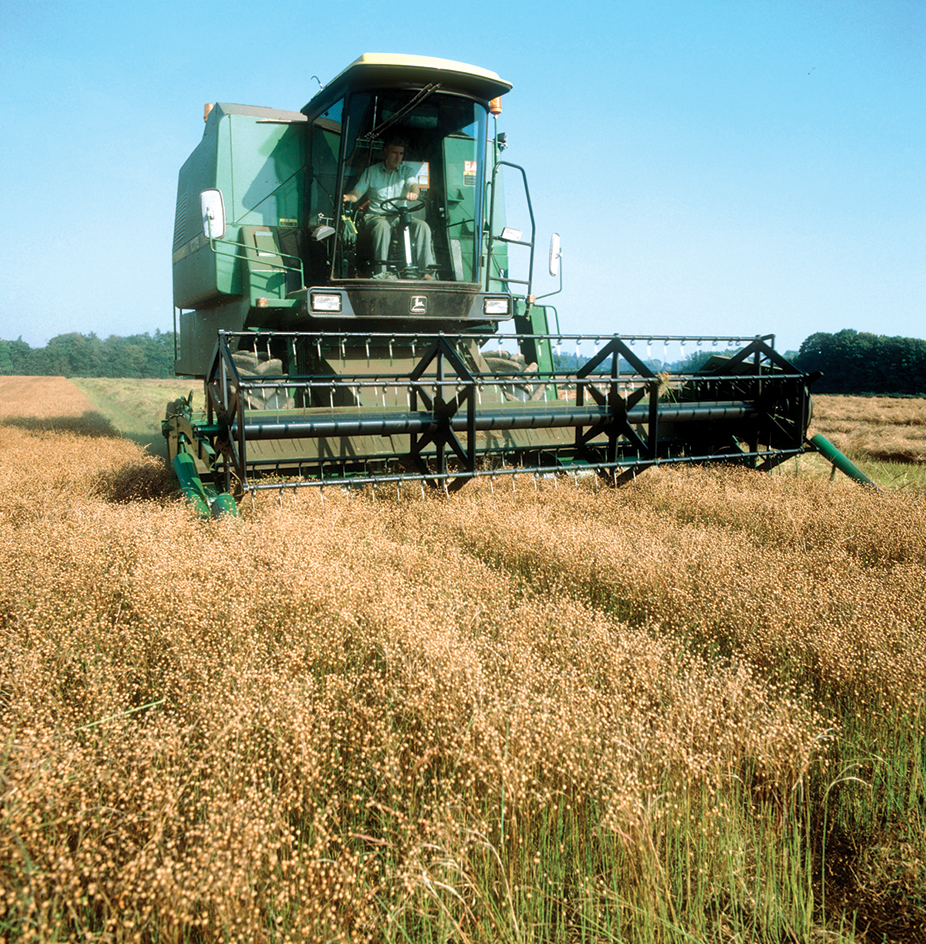
All agricultural products share one thing in common—they depend on sunlight. Crops, like all plants, get energy directly from the sun. Livestock animals get energy by eating crops or other plants. Agriculture involves transforming the sun’s energy into a form that human beings can use.
The most important form of energy that agriculture provides is food. Human beings require a wide range of nutrients (nourishing substances) to survive. The three most important are carbohydrates (mostly sugars and starches), proteins, and fats. Various agricultural products have different amounts of these nutrients.
Food from plants.
Plants use a process called photosynthesis to capture the sun’s energy. Photosynthesis takes place in special parts of a plant’s leaves. These parts use the energy of sunlight to combine water with carbon dioxide from the air, making sugar. The sugar serves as food for the plant.
There are five main groups of plants raised as food crops. They are (1) cereal grains, (2) root crops, (3) pulses, (4) sugar-bearing crops, and (5) other crops.
Cereal grains
rank as the most important food crops. These plants are mostly grasses that are grown for their edible seeds. They include corn, rice, and wheat.

Many cereals are staple crops. A staple crop provides a large part of the world’s nutrition and so is grown in huge quantities. People often eat some form of staple crops at every meal. For example, many American and European meals include wheat in the form of bread or pasta. Rice dishes make up much of Asian food. Cereals also serve as fodder for animals.

Root crops
have large, nutritious underground roots. They include beets, carrots, potatoes, turnips, and such tropical plants as cassava and taro. Many root crops serve as staples in tropical areas. Root crops have large amounts of carbohydrates.
Pulses
are a group of plants whose seeds are used for food, including beans and peas. Unlike most other plants, pulses contain high amounts of protein.
Sugar-bearing crops
—mainly sugar beets and sugar cane—are processed to make sugar. Sugar beets are root crops grown in cooler areas. Sugar cane is a tropical grass. Sugar processors can more easily extract sugar from sugar beets than from sugar cane.
Other food crops
include fruits, nuts, vegetables, and such oil-bearing crops as canola and olives. Vegetables and fruits contain many nutrients and provide variety in diets. Farmers also grow such specialty crops as coffee and tea, as well as cacao beans for making chocolate.
Food from animals.
People raise many livestock animals for their meat, eggs, or milk. Such animals include cattle, chickens, goats, hogs, sheep, and turkeys. Many animal products contain high amounts of protein.

All livestock eat plants to get the energy they need to grow and to produce eggs or milk. Some farmers raise their livestock on pastures, where the animals eat natural grasses. Many other farmers raise livestock animals in large pens called feedlots, where the animals eat fodder made from cereal grains.
Other food-producing animals important to agriculture include bees, fish, and shellfish. Beekeepers raise bees for their honey. Fishing crews take many fish and shellfish from open waters. However, in a type of farming known as aquaculture, farmers raise fish, shellfish, and aquatic plants in large underwater holding areas called fish farms.
Fuel and raw materials.
Agriculture also plays a key role in producing fuel and nonfood materials for industry. Some products, such as cotton, come from plants raised for the sole purpose of producing that product. Others, such as some biofuels, come from plants that also produce food.
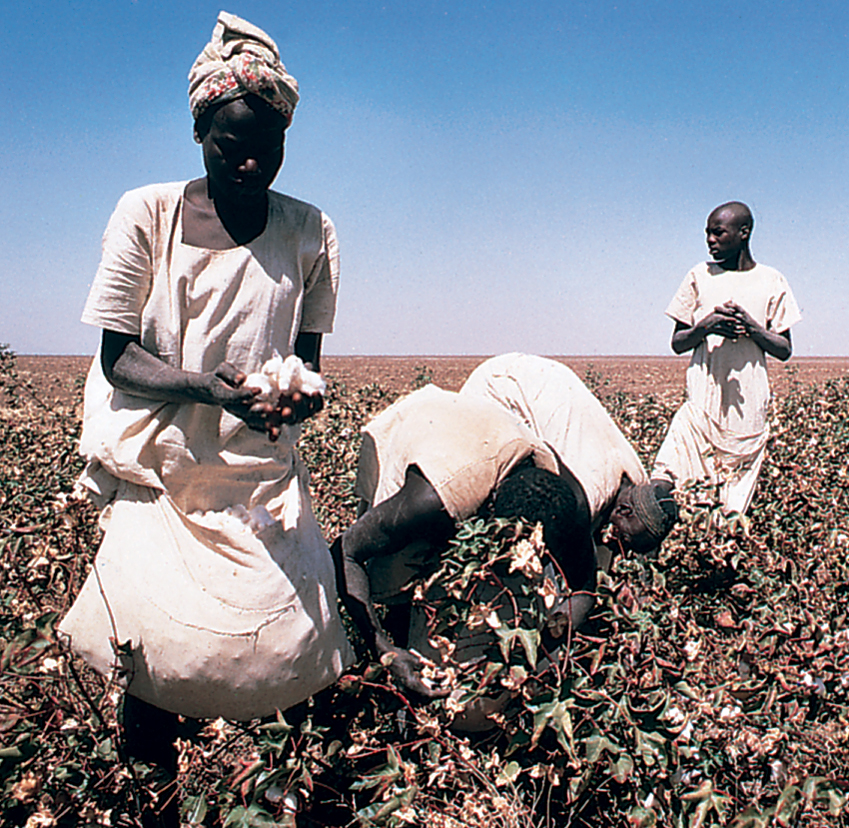
Biofuels
are fuels produced from agricultural crops. Such plants as corn, sugar cane, and switchgrass can be made into ethanol and biodiesel. These substances can be used in place of gasoline and diesel fuel.
Biofuels differ from such fuel sources as coal, petroleum, and natural gas. These other substances, called fossil fuels, consist of long-dead remains of living things compressed over millions of years. Fossil fuels provide much of the energy used to power modern society. But fossil fuels are a nonrenewable resource—that is, they exist in limited amounts, beyond which we cannot produce more. Biofuels, on the other hand, come from plants that can grow year after year.
Raw materials
include natural fibers, timber, animal hides, and nonedible oils. Many of these materials are used to manufacture finished products. For example, cotton—a plant fiber—is used in many types of clothing, as well as such products as coffee filters. Silk from silkworms and wool from sheep also serve as important clothing fibers. Castor oil and linseed oil come from plants with high oil contents in their seeds. These oils are used to create paints, lubricants, medicines, and other products. Farmers also grow ornamental plants, including cut flowers and decorative trees.
Agricultural practices
Farmers have developed many methods of harvesting a vast number of crops. With the exception of the frigid polar regions, people practice some form of agriculture on almost all of Earth’s land. Until the early 2000’s, more people worked in agriculture than any other industry. Only the service industry employs more people today.
Agricultural practices vary widely based on climate, soil, and physical terrain. In mountainous areas, farmers often grow root crops on steplike terraces carved into slopes. In parts of Asia, farmers take advantage of heavy rains from monsoons (seasonal winds) to grow rice in flooded paddies. Farmers in dry regions often use irrigation to water their soil, bringing the water from distant rivers or other sources. Some grasslands with poor soils or too little water for growing food crops provide grazing for livestock animals instead.
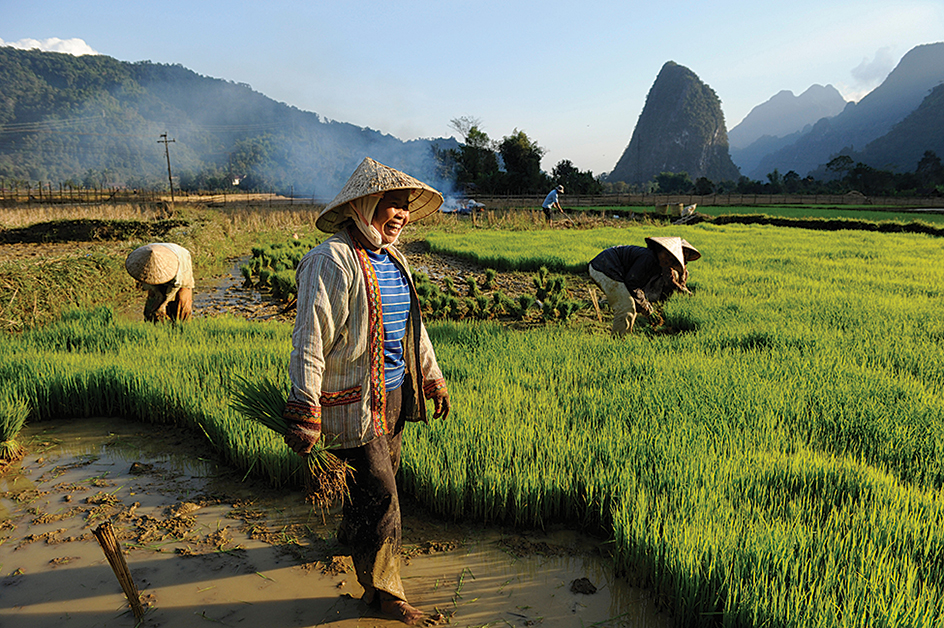
Wealth, technology, and cultural history also influence how agriculture is practiced. In less developed parts of the world, farmers practice subsistence agriculture or semisubsistence agriculture. Such farmers grow food mostly for feeding their families, often using just the power of their own muscles and draft animals. In contrast, most farmers in developed countries practice industrialized agriculture. They use tractors, chemical fertilizers, and other modern technologies to help plant and harvest vast areas of land. In industrialized agriculture, the work of one farmer may feed dozens of families or more.
Subsistence agriculture
has been the main form of agriculture for most of human history. Subsistence farmers subsist, or survive, almost entirely on what they can grow or raise. They have little food left over to sell and little money to buy other food. Semisubsistence farmers grow small amounts of extra food that they sell to others. Subsistence agriculture requires much human labor, leaving little time for other activities associated with modern civilization. Hundreds of millions of people in Africa, Asia, and Latin America practice subsistence or semisubsistence agriculture.
Subsistence farmers often practice shifting cultivation, which involves moving from one small plot of land to another. They use simple technology, such as plows attached to draft animals. They rarely have access to fertilizers other than natural fertilizers, such as manure. Another form of traditional agriculture is pastoralism, the raising of herds of grazing animals.
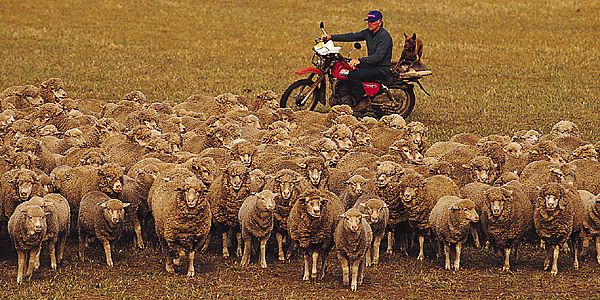
Shifting cultivation
is an ancient method of farming. Farmers commonly practice it in tropical areas with poor soil. They clear a small area by cutting down trees and vegetation and burning them. The ashes help fertilize the soil. Because of these methods, shifting cultivation is sometimes called slash-and-burn agriculture.

The farmers typically grow crops in an area for one to three years. Eventually, the crops deplete the fertility of the soil. Then, farmers clear a new area and move the farm there. The first area may lie fallow for a number of years while its fertility recovers.
In shifting agriculture, farmers often plant crops by digging holes in the soil with sticks or simple tools and dropping the seeds in. The farmers typically grow a mixture of crops in the same field. This growing strategy is called polyculture. A traditional polyculture involves beans, corn, and squash. The sturdy corn stalks help support the beans. Together, the crops benefit the soil in ways they would not if planted separately.
Shifting cultivation can cause environmental problems, especially in areas with high populations. With more people to feed, farmers become pressured to slash and burn more land, damaging ecosystems. They also may leave the soil less time to recover.
Pastoralism
involves the breeding and raising of such grazing animals as alpacas, camels, goats, sheep, and yaks. Most pastoralist peoples live in places that are too hot, cold, dry, or rocky to support food crops. The people live in small groups and move about constantly in search of water and pasture for their herds. A major region supporting millions of pastoralists stretches from northern Africa through the Arabian Desert into Mongolia and Tibet.
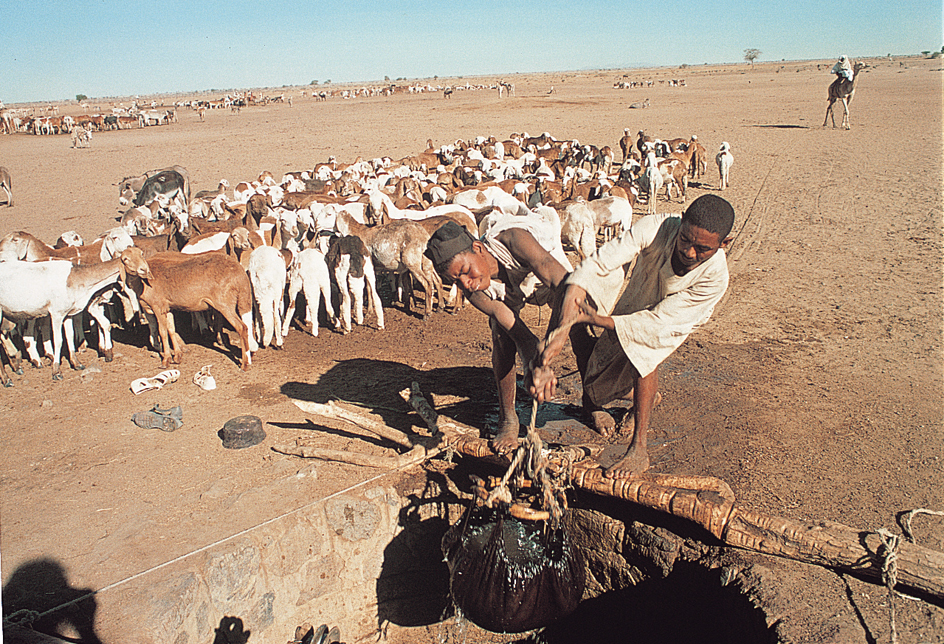
Some pastoralists trade milk, meat, and other animal products with nearby farmers. They may also graze their herds on unused farms. The animals help fertilize the soil with their manure.
Industrialized agriculture
developed from technological advances made in the 1800’s in Europe and America. It has since spread all over the world. In industrialized agriculture, machines perform much of the physical farm work, such as plowing and harvesting. Farmers use manufactured chemicals to fertilize the soil and keep pests away. Unlike subsistence farms, industrialized farms raise a surplus of crops. They sell these crops in national and global markets, often shipping them great distances.
Large corporations own and operate many industrialized farms. In addition to farming, such agribusinesses often control the processing, distribution, and marketing of farm products. Some agribusinesses employ contract farmers, also called contract growers, whom they pay to produce a certain amount.
As scientific and technological knowledge has increased, so has the efficiency of industrialized agriculture. In 1900, for example, a typical farmer in the United States could produce only enough food to feed several people. A modern farmer in the United States produces enough food to feed well over 100 people. Today, computers automate much industrialized farm work, such as irrigating soil, feeding livestock, and even operating tractors.
Industrialized farming techniques have made much of our modern civilization possible. However, their intensive use has also contributed to a number of environmental, ethical, and social concerns.
Growing plant crops.
Unlike most subsistence farms, industrialized farms typically grow a single, uniform crop over large areas of land. Such a practice is called monoculture. Examples of monoculture include vast wheat and corn fields in North America, as well as large areas of oil palms in Southeast Asia. The uniformity of a monoculture enables farmers to efficiently grow and quickly harvest huge amounts of crops. For example, a single tractor or combine can run across a whole field, planting or harvesting all the crops at the same time.

The plants in a monoculture share genetic (inherited) similarities and so respond similarly to fertilizers, pesticides, and growing techniques. Many monocultures have special adaptations for the region in which they grow. On a farm with salty soil, for example, a farmer may plant a variety of tomato with a high salt tolerance. Farmers may also plant varieties that have resistance to certain diseases or pests, or that grow well with synthetic fertilizers. Such adaptations may be natural, developed through breeding, or introduced through genetic engineering. Breeding is the careful selection and pairing of plants or animals to bring about desired characteristics in their offspring. Genetic engineering is the direct manipulation of a living thing’s genes (hereditary material) to change its inherited characteristics.
To protect crops from pests, industrialized farms often spray the plants with chemical pesticides. They also use chemical fertilizers to replenish soils and increase yields.
One major environmental and health concern in industrialized agriculture involves the widespread use of chemical pesticides. Pesticides are poisons, and large amounts of the chemicals can harm wildlife and human beings. In addition, diseases, weeds, and insects can often become resistant to a particular pesticide. If this happens, farmers must use more of a pesticide or researchers must develop a new pesticide.
Another major agricultural concern is the vulnerability of monocultures. In addition to sharing strengths, the plants in a monoculture have the same weaknesses. For this reason, a disease that harms a single plant will likely affect every plant in the field. Diseases and pests can become especially damaging to monocultures if a single crop variety is planted across a large region. For example, in 1970, a corn leaf blight fungus destroyed about 15 percent of the corn crop from Florida to Texas.
Raising livestock.
In industrialized agriculture, farmers increasingly raise animals in indoor pens or in crowded outdoor enclosures. Feedlots are outdoor pens that can hold thousands of cattle. Some cattle are born and raised on natural pastures and later moved to feedlots to gain weight before they are slaughtered.
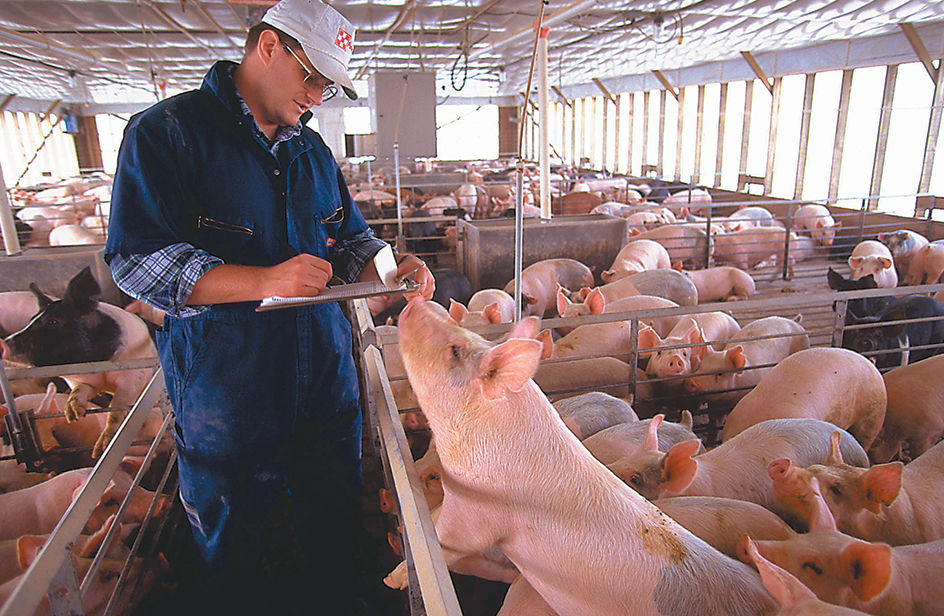
Many modern farms resemble highly automated industrial factories. Such farms are often called confined animal feeding operations (CAFO’s) or factory farms. They produce massive amounts of meat, dairy products, and eggs quickly and cheaply. Millions of hogs and chickens are raised in indoor factory farms.
Factory farms are designed for efficiency. The farmers give the animals high-energy feed, often made from cereal grain fodder. The animals are confined in dense groups. They gain weight rapidly before being slaughtered and sold as meat.
Reforming agricultural practices.
One of the broadest criticisms of many industrialized techniques is that they are not sustainable—that is, they cannot be continued in the long-term because they cause irreparable damage to the environment, depletion of natural resources, and disruption of human communities. Monocultures, for example, have been attacked as unsustainable for their vulnerability to pests and diseases. Industrialized agriculture also relies heavily on fossil fuels, which are used to create synthetic fertilizers and pesticides and to transport farm products. Critics charge that such reliance on diminishing supplies of fossil fuels is not sustainable.
Much ethical criticism has centered on the use of factory farms to raise livestock. At such farms, the demands of efficiency tend to minimize concern for the welfare of animals. Many people consider the crowding, confinement, slaughtering techniques, and other elements of factory farming cruel and degrading to animals.
Another ethical and health concern in industrialized agriculture involves the widespread use of drugs to treat livestock. Diseases can spread easily among animals in crowded conditions. To prevent sickness, factory farms often give their animals regular doses of antibiotics (germ-fighting drugs). Cattle also typically receive vitamins and growth hormones (body chemicals) that boost their weight or cause them to produce more milk. Many people worry about the health effects of eating meat or drinking milk from animals exposed to large amounts of antibiotics and growth hormones. Many people also worry that the widespread use of antibiotics has led to more antibiotic resistance in disease-causing organisms.
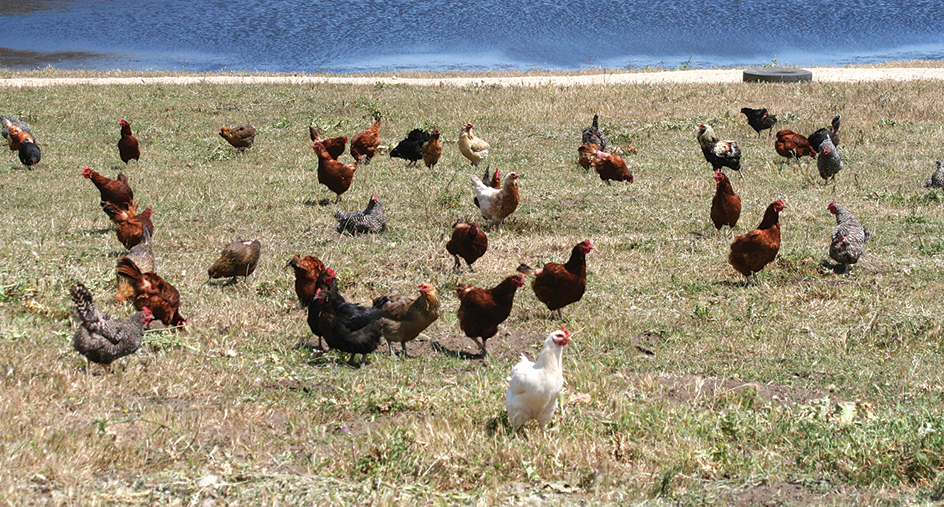
Criticisms of industrialized agriculture have led to the development or proposal of practices considered to be more sustainable and kinder to livestock. They include organic agriculture and local food movements.
Organic agriculture
is one response to many concerns about industrialized agriculture. Organic farms grow crops that are not genetically engineered using little or no pesticides, synthetic fertilizers, or other artificial chemicals. Organic meat, eggs, and dairy products come from animals raised on organically grown fodder or natural grasses. In addition, the animals must not receive antibiotics or growth hormones. Before a farmer can label and sell a food as organic, the farm and its products must pass a government certification process.
Organic farmers use natural processes and substances to fertilize their crops and to control pests and diseases. For example, organic farmers often apply compost (decaying plant and animal matter) to their crops instead of synthetic fertilizer.
Like industrialized farms, many organic farms are run by large agribusinesses. Many organic farms also grow crops in monocultures and transport them long distances to market.
Local food movements
have increased in popularity since the late 1900’s. Such movements assist consumers in the purchase of agricultural products from nearby farms. Supporters argue that local food movements allow farmers to develop a closer relationship with the people they feed. They also argue that buying local food helps reduce the use of fossil fuels used to transport products. In practice, however, local food production and distribution does not always use fuel as efficiently as large-scale, long-distance systems of agriculture.
In many cities, farmers’ markets sell locally produced food and other products. Another form of local food distribution is called community supported agriculture (CSA). Members of a CSA organization directly pay a local farmer in advance for a certain amount of food. The members can then pick up fresh food from the farm throughout the growing season. Some CSA members may work on the farm in exchange for food.
Agriculture and society
Agriculture is centrally important to human society. It provides materials for food and clothing—two of life’s most basic necessities. Agriculture also plays a vital role in the global economy, and economic activity has a strong effect on agriculture. In addition, ensuring the safety of agricultural products is a major public health concern. For these and other reasons, governments throughout the world regulate and control many aspects of agriculture.


The global market
shapes, and is shaped by, agricultural activity. Today, billions of people buy their food in supermarkets. A shopper in Europe or North America can buy bananas from Costa Rica, lamb from Australia, and a frozen dinner with ingredients from China. In late winter, the same shopper can buy fresh apples harvested and flown in from New Zealand—where it is late summer and apples are in season. The global market makes possible such a variety of food choices. Using modern communication and transportation, the market connects farmers, distributors, food processing companies, and consumers throughout the world.
Commodity trading.
Many agricultural products are commodities—that is, raw, unprocessed goods that can easily be bought and sold in large amounts around the world. Commodities, or contracts to produce commodities, are bought and sold by investors at a commodity exchange. A global network of commodity exchanges enables food grown in one country to be bought and sold around the world.
The international trading of commodities affects farmers in a number of ways. It offers farmers a wide variety of overseas markets for selling their products. But it also exposes them to much more competition from farmers in other countries. Farmers in less developed countries may suffer because customers in such countries can often buy food from distant, industrialized farms more cheaply.
Changes in demand
affect food prices and agricultural production. The greater the demand for an agricultural product, the more farmers can charge for it.
Modern demand for agricultural products has increased due to several factors. One factor is population growth—more people require more food. But the world’s farms can produce only a limited supply of food, causing food to become more valuable—and expensive.
A second factor is the growth of wealth. As countries become more developed, their people generally want to consume more food—and in particular, more meat. A higher demand for meat increases not only the price of meat but also the price of cereal grains used as fodder. The resulting increase in staple grain prices can put particular pressure on poor people who rely on cereal grains as a central part of their diet.
A third factor increasing food prices is the development of biofuels. Some biofuels are made from important food crops, such as corn. An increase in fuel demand means that more crops may go to make biofuel for automobiles instead of providing food for people.
Government regulation.
Governments around the world regulate the quality and safety of agricultural products that enter the market. Governments also use a number of methods to control agriculture’s interaction with the economy.
Grades and labels
of agricultural products exist to protect consumers from harm. In most cases, government agencies grade crops and animal products according to their quality. Only food with certain grades is considered fit for sale to people—though some food not suitable for human consumption can be sold for livestock and pets. Governments typically monitor crops for outbreaks of disease and coordinate responses to such outbreaks.
Governments also regulate the labeling of food products. Effective labeling ensures that consumers know the freshness, nutritional content, and ingredients of what they buy. Labels often include a sell by or use by date on the packaging. Such perishable foods as dairy, eggs, fish, and meat have especially strict labeling requirements. Governments regulate the organic label so that consumers know the food was raised according to specific standards. The European Union requires genetically modified food to have clear labels identifying it as such.
Economic controls
are used by governments to ensure that the food supply remains stable, protecting people from shortages. The controls also serve to help farmers and agribusinesses make profits.
In general, the demand for a crop determines its price. Farmers tend to grow crops that they think will yield a high price at the markets. For example, a farmer might notice that corn sells for a high price, and so the farmer will plant fields with corn for next year’s harvest. But if every farmer in the area did the same, they would produce a huge surplus of corn that nobody wanted. All the farmers would have to sell their corn at low prices and lose money.
Governments use several techniques to keep the supply of a crop from greatly exceeding the demand. A price ceiling—that is, a maximum price set for a crop—may discourage farmers from growing that crop. Governments also offer farmers subsidies (financial assistance) in exchange for not growing a certain kind of crop.
Price floors have the opposite effect, encouraging farmers to grow a crop by setting a minimum price above the market’s price. Another way governments encourage agriculture production in their own countries is through tariffs and other trade barriers. A tariff is a tax on products imported from other countries. Because foreign products become more expensive with such taxes, more people will want to buy local products—which encourages domestic farmers to grow more. Less developed countries may also use subsidies and trade barriers to encourage more people to become farmers, creating sources of income and guarding against famine.
Agriculture and the environment
Agriculture has changed much of Earth’s surface from its natural state. For at least 10,000 years, people have cut down forests to clear areas for farmland. They have dug canals and redirected water supplies to irrigate their farms. Even the crop plants and livestock animals have changed significantly from their wild ancestors through breeding. Since the 1980’s, plants and animals have also been changed through genetic engineering.
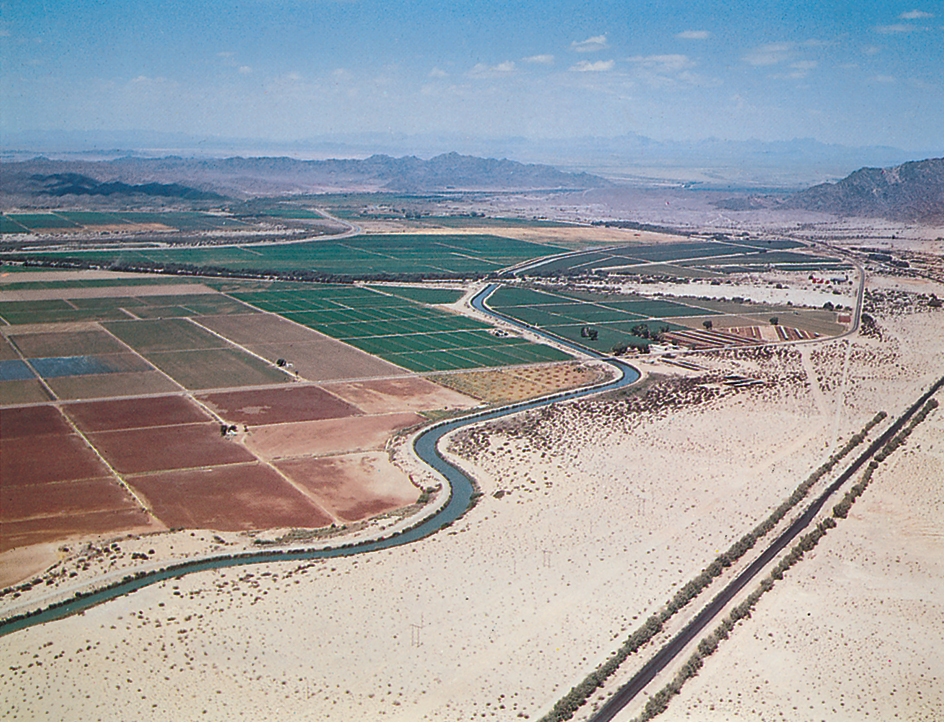
The clearing of wilderness to make room for farmland can damage topsoil and destroy fragile ecosystems. Planting monocultures and relying on only a few widespread crops threatens biodiversity, the variety of living things in the environment. Industrialized agriculture relies on large amounts of fossil fuels and synthetic chemicals, contributing to pollution. Today, agriculture has a greater impact on the environment than ever before.
Ecosystem destruction.
The vast fields of modern farmland were once complex ecosystems, home to hundreds of species (kinds) of plants, animals, and other living things. Before agriculture, for example, forests covered much of Europe. The Great Plains of North America once supported vast prairies, which early explorers described as “seas of grass.” Today, corn and wheat fields have replaced almost all the prairies.
In addition to destroying native ecosystems, agriculture can also damage topsoil. Soil is itself a kind of ecosystem, home to many kinds of worms, insects, and microorganisms. Topsoil can take hundreds of years to form. However, intensive farming can quickly drain topsoil of its nutrients and disrupt its ecosystem.
Farming can even strip topsoil altogether by contributing to erosion. Topsoil acts like a sponge, absorbing great amounts of moisture. If an area’s topsoil erodes, the area can quickly dry out. In regions that are already dry, farming can contribute to the loss of fertile land known as desertification. Without healthy topsoil and native grasses, such areas lose their ability to hold any significant amount of water and become lifeless desert wastelands.
Threats to biodiversity.
Prairies, forests, and even deserts support many different kinds of plants, fungi, insects, and large animals. But farmed areas tend to support relatively few living things. Monocultures, in particular, are created to support only a single kind of plant. As more wilderness areas have been converted into farmland, overall biodiversity has declined.
In addition to the diversity of species, modern agriculture also threatens genetic diversity within species. In natural ecosystems, different individuals of the same species often show much genetic variation. But in a monoculture, all the plants in the field have similar or even identical genetic makeup. This lack of diversity even threatens the crops themselves. If the genetic variety of a species becomes lost, farmers and scientists cannot breed new varieties to replace those that fail.
Pollution.
Modern agriculture causes many kinds of pollution. Industrialized farms often spray crops with large amounts of pesticides. These chemical poisons can contaminate a region’s soil and ground water (water beneath the surface). Pesticides can also kill harmless or beneficial insects and other organisms.
Ocean and lake ecosystems can be greatly harmed by fertilizers from crop fields and by livestock wastes. Fertilizers and animal wastes contain many nutrients that can help plants grow. But they also provide food for plantlike organisms called algae, which live in bodies of water. Rain often washes fertilizers and animal wastes from farms into rivers and streams that flow into the ocean and other bodies of water. There, the nutrients cause algae to rapidly multiply, creating algal blooms that use up all the oxygen in the water. Without oxygen, fish and other organisms in the water die.
Agriculture also heavily contributes to global warming—an observed increase in Earth’s average surface temperature. Global warming is chiefly caused by greenhouse gases, which trap heat in Earth’s atmosphere. Burning fossil fuels gives off greenhouse gases, and most modern farm machinery burns fossil fuels. Fossil fuels are also used to transport farm products around the world. Livestock animals produce large amounts of the greenhouse gas methane as they digest their food.
History
Before agriculture, human beings lived by hunting and gathering, also called foraging. People picked fruits, nuts, and seeds from their natural surroundings to eat. Many of these plants looked almost nothing like modern agricultural crops. Before people could farm, they first had to domesticate wild plants and animals—changing them into forms suitable for agriculture. People began to domesticate plants and animals for food around 9000 to 8500 B.C. Soon afterward, people began to farm.
As early farming communities developed agricultural technologies, they also expanded into new areas and traded with other peoples. As a result, new farming practices began to spread throughout the world. Eventually, certain farming communities developed into the first great civilizations.
Beginning in the late A.D. 1400’s, Europeans sailed across the Atlantic Ocean to the Americas. They brought many native crops from the Americas—such as chocolate, potatoes, and tomatoes—back to Europe, Asia, and Africa. Europeans also introduced their own native crops and livestock onto American lands as they began settling and farming North and South America.
Industrialized agriculture emerged in Europe and the United States during the 1800’s, greatly increasing agricultural productivity. In the mid-1900’s, Western scientists helped spread the techniques and technologies of industrialized agriculture to less developed countries in Asia, Africa, and Central and South America. This expansion became known as the Green Revolution.
Today, the world’s fast-growing population relies on highly productive industrialized farming to provide enough food. But many aspects of industrialized agriculture cannot be sustained indefinitely. Scientists and farmers are working to develop new methods to provide enough food for the world’s people without depleting natural resources and destroying the environment.
Origins of agriculture.
Like all living things, crop plants and livestock animals evolve (change over time) through a process called natural selection. In natural selection, certain organisms have traits that help them survive and reproduce more readily. These organisms produce more offspring, passing on those traits to a greater number of individuals. The traits thus survive and spread throughout a population. In effect, nature “selects” for traits that aid in survival and reproduction. See Natural selection.
In domestication, people also act as agents of selection. Hunter-gatherers learned to identify the tastiest and most nourishing varieties of wild plants. They selected the best individuals of such plants for their purposes and spread seeds from those individual plants more than the seeds of others. This practice ensured that more of the plants they considered best would survive and reproduce. Human selection transformed wild plants over a relatively short period into domesticated agricultural crops.
Human beings also changed livestock animals from their wild ancestors through domestication. In the past, people hunted wild animals for food. But a few species of wild animals had characteristics that made them suitable for domestication. For example, people could easily tame and herd some animals. Early farmers selected specific animals with such tameable characteristics, protected them from predators, and helped them reproduce. In this way, human selection transformed the animals into domesticated livestock.
Centers of domestication.
Domestication did not occur as a single event or in a single place. Instead, people in a number of different regions independently domesticated various crops and livestock. Scientists often call such areas centers of domestication. From these locations, agriculture spread as people migrated to, or traded with, other lands.
The first domesticated crops probably emerged in an arc-shaped region of the Middle East called the Fertile Crescent. Beginning around 9000 to 8500 B.C., people in the Fertile Crescent domesticated barley, lentils (a type of seed vegetable), peas, and wheat from wild plants that were native to the region. Inhabitants of the Fertile Crescent also first domesticated goats and sheep, and were among the first to domesticate cattle and pigs. Soon afterward, many of these crops and livestock spread to northern Africa, Europe, and parts of Asia.
China was the second important center of domestication. People there first domesticated millet and rice by roughly 8000 B.C. Inhabitants of the area were also among the first to domesticate pigs and chickens.
Also around 8000 B.C.—on the other side of the world—people in the Andes region in South America domesticated squash. People there later domesticated such crops as lima beans, peanuts, and potatoes, along with such livestock as guinea pigs and llamas.
In Mesoamerica (Mexico and Central America), people independently domesticated squash around the same time as in South America. Mesoamericans later domesticated such crops as avocados, beans, and corn. Eventually, they also domesticated ducks and turkeys, but their agriculture focused more on crops than livestock.
Scientists believe another important center of domestication was the large island of New Guinea. People there may have been the first to domesticate yams and taro around 7000 B.C. They may also have been the first to domesticate bananas and sugar cane.
Scientists have identified a small number of additional centers of domestication, including areas in Africa and a region in what is now the eastern United States. These centers began domesticating plants and animals later than the other centers.
The transition to farming.
In many ways, early agriculture required more time and labor than hunting and gathering. The earliest farmers had only simple tools to help them plant and raise crops. Their diets also relied on a few staple foods, often providing less nutrition than the more varied diets of hunter-gatherers. Crop failures could lead to widespread starvation. In addition, disease spread quickly through the crowded conditions in early farming communities. For these reasons, many scholars have wondered why early farmers would adopt agriculture as a way of life.
Scientists have developed several theories to explain this mystery. For example, many domesticated plants arose in marginal areas with poor soil or limited rainfall, or in places with changing climates. People in such areas may have intentionally domesticated plants to protect against famine. Farming would have been the only way they could get a reliable and adequate supply of food. Some scientists, on the other hand, think domestication may not have been entirely intentional. For example, hunter-gatherers may have unconsciously dispersed the seeds of their favorite food plants around their settlements. Over time, such plants would have evolved to thrive in the conditions around settlements, becoming domesticated.
In the prehistoric past, hunter-gatherers usually lived in small groups, constantly moving from place to place to obtain food. Once people began cultivating domestic crops and animals, they could settle in one place. A settled lifestyle enabled human populations to grow, leading to the first villages and towns. The conditions of settled life both made possible and required new forms of social, political, and economic interaction.
Once a community had settled and grown, hunting and gathering became impractical. Farming provided the only way to get enough food to feed large, concentrated populations.
Ancient civilizations.
Over thousands of years, agricultural communities gradually developed into cities and, in some cases, city-states, kingdoms, and empires. A city-state is an independent state consisting of a city and its surrounding farmland and other territory. Several ancient civilizations made especially important contributions to the development of agriculture. They include the Sumerian and Egyptian civilizations, the Roman Empire, and the Han dynasty of China.
Mesopotamia and Egypt.
Agriculture first arose in the Fertile Crescent, and this area also gave rise to the world’s first great civilizations. One civilization, the Sumerians, lived between the Tigris and Euphrates rivers in what is now Iraq. This region is referred to as Mesopotamia. The other civilization, Egypt, formed just west of the Fertile Crescent, along the Nile River delta. Both civilizations dug canals linking the rivers to their farmland. These irrigation systems enabled farmers to grow crops all year, even though neither region received much rain.
The Sumerians and Egyptians also developed ox-drawn plows. These tools could quickly turn over large amounts of soil for planting. In addition, this advance saved farmers from having to push or drag the plows themselves.
Rome.
By 272 B.C., the Roman Republic—which later became the Roman Empire—controlled most of the Italian Peninsula. Roman agriculture was based on farms spread throughout the lands the Romans controlled. As the Romans conquered more lands, they spread their agricultural technologies and techniques throughout much of Europe.
The Romans built complex irrigation systems featuring raised waterways called aqueducts, which brought water to farms and city residents from distant sources. Roman farmers who could afford to often left half their fields fallow each year to help restore nutrients to the soil for the next year’s harvest. They also often alternated a field’s crop between pulses and cereal grains, an example of crop rotation. The pulses helped restore the soil’s nitrogen, an important nutrient quickly depleted by cereal grains.
China.
The ancient Chinese, like the ancient Egyptians and Sumerians, developed irrigation systems and plows drawn by animals. During the Han dynasty, which ruled China from 206 B.C. to 220 A.D., Chinese farmers developed several technologies that helped them harness the power of flowing water. For example, they used water wheels to transport water from lower to higher elevations. The Chinese also invented a trip hammer, a mechanical hammer used to pound grain. The hammer, powered by water pressure, could quickly pound rice to separate the husk from the edible grain. People had previously done this work by hand.
The Middle Ages.
During the A.D. 400’s, the Roman Empire in western Europe collapsed. This collapse began a period of history known as the Middle Ages, which lasted until the 1400’s. During the same period, civilizations in the Middle East, China, and the Americas made a number of agricultural advances.
In western Europe,
a new type of farming estate developed. Much of the land was divided into units sometimes known as manors. Each manor produced most of its own food and goods. The extensive, long-distance agricultural trade that the Romans had developed decreased, and trade generally became more local.

A landlord, often a noble or church leader, controlled each manor. Tenants and laborers also lived on the manor and worked as farmers. They supplied the lord with a certain amount of produce in exchange for the use of the land and protection from attackers. Some farmers, called serfs, were considered “bound to the soil,” meaning that they were essentially part of the manor’s property. Unlike slaves, serfs could not be sold, but stayed on the land if a new lord acquired it. There were also some peasants who owned all or part of their land.
Some farmers replaced the Roman two-field system of crop rotation with three- or four-field systems. Instead of leaving half of their land fallow each year, such farmers left only a third or a fourth of it fallow, which could yield more food each year. They rotated such crops as wheat and barley on the remaining farmland.
In China and the Middle East,
agriculture and farming technology continued to develop during the Middle Ages. In the 400’s or possibly earlier, the Chinese developed a collar harness for hitching plows to horses. Horses could drag plows faster and for a longer period of time than oxen could. During China’s Song dynasty (960-1279), farmers began using early-ripening rice. This rice could produce two or three harvests each year, which helped create and support a rapid growth in China’s population.
By the mid-700’s, Muslims controlled a vast empire in the Middle East. They put into use sophisticated crop rotation and improved irrigation. The long reach of the Islamic Empire during the Middle Ages created a more global system of trade and played a crucial role in the spread of several crops. Such foods as artichokes, lemons, oranges, and sugar were introduced to Europe through the Islamic Empire. People in the Islamic Empire also invented new ways of processing cotton, widely increasing that crop’s importance.
In the Americas,
several great civilizations had formed by the Middle Ages, supported by farming such products as beans, corn, and root crops. The Maya of Central America dug irrigation systems to water their crops. About 900, the Maya civilization began to decline, possibly in part because of crop failures and the exhaustion of natural resources.
The Aztec, a civilization of central Mexico, formed fertile islands for growing crops by scooping up and piling mud from lake bottoms. The Inca and other inhabitants of western South America used a method of freeze-drying potatoes for better storage.
European and American expansion.
By the 1400’s, a more interconnected system of trade was developing. Ships carrying agricultural products and other goods began sailing between Europe, Africa, India, and Southeast Asia. Merchants in European cities had access to goods produced as far away as China.
But this system of trade did not become truly global until 1492, when the Italian navigator Christopher Columbus sailed to North America. Before this time, agriculture in the Americas had developed completely independently from agriculture in the “Old World” of Europe, Africa, and Asia. Europeans had never seen such crops as cocoa, corn, peppers, potatoes, and tomatoes, which only grew in the Americas. Similarly, the Native Americans had never seen barley, cattle, sheep, wheat, and other plants and animals that had only existed in the Old World. The exchange of crops and livestock between these continents revolutionized agriculture in both places.
Colonial agriculture.
By the 1600’s, several European countries had established colonies throughout the Americas. The colonists established agricultural systems resembling those of their native countries. For example, Spanish colonists created large haciendas (farming estates) similar to those in southern Spain. They treated the Native Americans much like serfs. In the area that is now Canada, French colonists established estates controlled by nobles or merchants and rented out land to other settlers.
In the warm regions of the Americas, Europeans established large plantations that specialized in raising crops for export back to Europe. These crops included cocoa beans, coffee, cotton, sugar cane, and tobacco. At first, the colonists enslaved Native Americans to work on the plantations. Later, they began importing large numbers of black slaves from Africa.
In England’s North American colonies, many early settlers cleared away forests to establish small subsistence or semisubsistence farms. Such farmers carried European agriculture farther and farther westward. But in the Southern Colonies, some wealthy farmers established huge plantations worked by slaves. The plantations typically grew export crops.
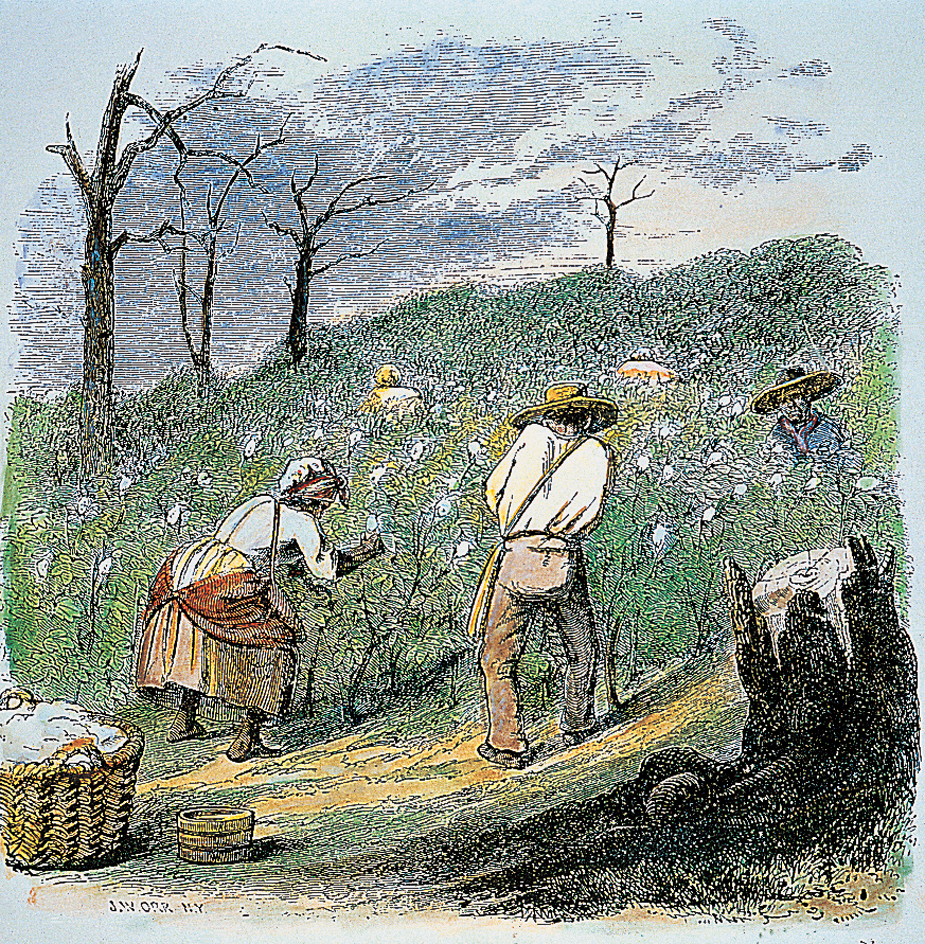
Europeans also established colonies in Asia during the 1600’s and afterward. As in much of the Americas, agriculture in these colonies typically shifted to the production of export crops for the enrichment of the European countries. Plantation systems and tenant farming systems developed in some Asian colonies as a result of the shift, and many small farmers lost their land.
Technological advances.
During the 1600’s and 1700’s, improvements in existing crop production and farm machinery helped make agriculture more efficient. One particularly important new device was the cotton gin, invented in 1793 by an American named Eli Whitney. The machine could remove the seeds from cotton fibers as fast as 50 people could by hand. The cotton gin thus made growing cotton much more profitable, and cotton soon replaced tobacco as the leading crop in the United States. As the cotton industry expanded, planters needed more and more workers to pick and bale the cotton. The demand for workers led to large increases in the population of African American slaves.
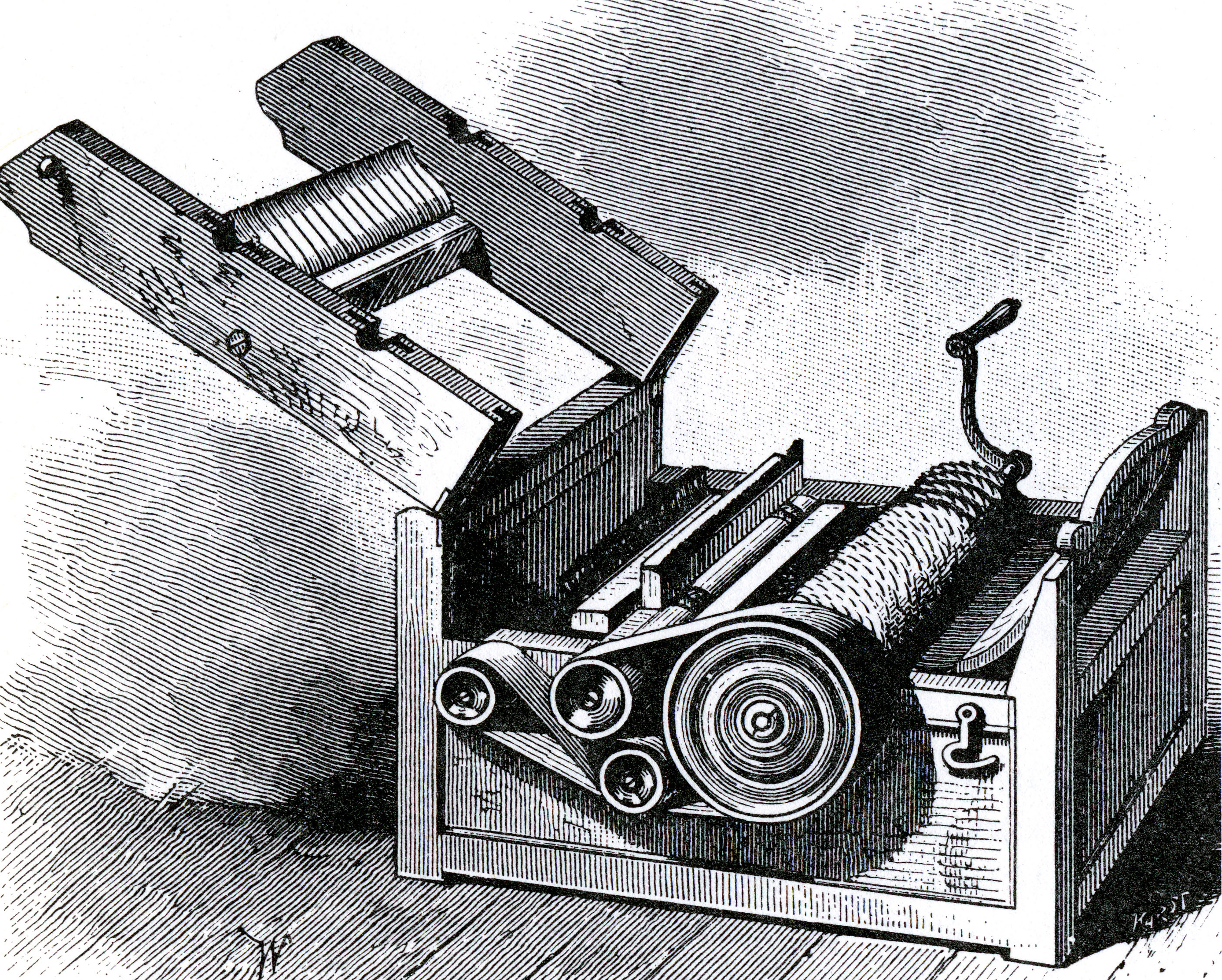
The industrialization of agriculture.
In the late 1700’s and early 1800’s, technology advanced rapidly in Britain (now also known as the United Kingdom). This period, called the Industrial Revolution, radically changed European and American society. It also led to the emergence of industrialized agriculture, which transformed farming across the world.
A number of new developments led to agriculture’s dramatic increase in productivity. They include: (1) the invention of powered machines; (2) the development of electric power; (3) the study of agricultural genetics; (4) the use of artificial fertilizer; and (5) the development of chemical pesticides.
Powered machines,
driven by coal-fired steam, gasoline, or other fossil fuels, changed farming throughout the world. In the United States, for example, a number of railroad lines linked populated cities in the East to the vast, fertile Great Plains by the mid-1800’s. This development enabled farmers to settle much of the Great Plains, replacing the prairies with farmland and shipping their agricultural products along railroad lines.

On the farms themselves, powered machines eliminated much of the need for manual labor. Before such machines, people either used draft animals—such as horses, mules, and oxen—to work their fields, or they worked with their own hands. Even such machines as Whitney’s cotton gin had needed to be cranked or pulled by people or animals.
Early steam-powered tractors were used successfully on some large farms. But despite their power, they were expensive and difficult to maintain. Their large size and awkward control made them impractical to use on many farms, especially smaller farms. In the late 1910’s and early 1920’s, lighter, gasoline-powered tractors became more popular. Many gasoline-powered tractors could pull and power a wide variety of farm equipment.
Although the machines needed fuel and maintenance, they quickly proved more effective than draft animals, which required food, shelter, and care even when not working. Fossil fuel-powered tractors soon became widespread on farms throughout the world.
Electric power
became widespread on farms by the mid-1900’s. In the United States, for example, the Rural Electrification Act of 1936 expanded electric service to rural areas. Before that time, only about 10 percent of American farmers had electric power. By the mid-1950’s, electric power spread to more than 90 percent of American farmers. In Japan, Europe, and other developed countries, electric power also spread quickly from cities to farms.
Electric power enabled farmers to take advantage of a number of inventions that made their work easier and more productive. Such inventions included electric milking machines and egg incubators, as well as irrigation pumps and wells operated by electric power. Electric power also ran communication devices—such as telephones, radios, and televisions—that helped provide farmers with essential information about markets, weather, and growing conditions.
Agricultural genetics
began with the work of an Austrian monk named Gregor Mendel. In the mid-1800’s, Mendel determined that plants and animals inherit traits based on certain patterns. His work led to the science of genetics.
Before Mendel’s studies, people bred animals without understanding the actual process behind inheritance. With a knowledge of genetics, scientists could breed new varieties of plants and animals even better suited for agricultural use. For example, in the early 1900’s, botanists used genetics to successfully cross two varieties of corn, creating a new variety called a hybrid. The hybrid corn produced extremely high crop yields. By the 1960’s, this hybrid variety made up 95 percent of all the corn planted in the United States.
Genetics also helped scientists and farmers refine selective breeding. Many livestock produced through selective breeding have traits that cause them to grow and fatten quickly, or to produce large amounts of eggs or milk. However, breeders must sometimes select certain genetic traits at the expense of others. For example, a tomato bred for a long shelf life or a tough skin may lose traits responsible for its flavor.
Artificial fertilizers
were developed with a new understanding of the chemical composition of the nutrients that plants need to grow. During the 1800’s and early 1900’s, scientists discovered that plants require three main nutrients from the soil: nitrogen, phosphorus, and potassium. Industrial processes can produce these chemicals directly using fossil fuels.
Before artificial fertilizers, farmers enriched their soil with such natural fertilizers as animal manure and decaying plant material. Using such natural fertilizers often resulted in a closed nutrient cycle. In a closed cycle, the nutrients in the soil move into the plants, then into the livestock that eat the plants, and then back into the soil through the livestock’s droppings. In a closed cycle, the nutrients do not leave the farmland, and the farmer need not add new nutrients.
The development and use of artificial fertilizers created open nutrient cycles. Farmers began buying artificial fertilizer produced in factories. They then harvested crops, often for sale in distant markets. Under this system, nutrients leave the farmland with each harvest, and farmers must add new nutrients back to the land in the form of fertilizers. But artificial fertilizers proved more efficient than natural fertilizers and so came into wide use.
Chemical pesticides
include herbicides (weedkillers), insecticides (insect killers), fungicides (fungus killers), and other chemicals that kill agricultural pests and control livestock disease. Before such chemicals existed, farmers controlled weeds by pulling them up or hoeing them. They had little control over insects or diseases.
In 1939, a Swiss scientist named Paul Muller discovered the insect-killing properties of one of the most important chemical pesticides, DDT (dichloro-diphenyl-trichloroethane). DDT was widely used on farms and sprayed in areas with malaria-spreading mosquitos. But by the 1960’s, scientists realized that DDT could poison other animal life, including human beings.
The Green Revolution.
By the end of World War II (1939-1945), much of Europe and North America practiced industrialized agriculture and could efficiently produce huge amounts of crops and livestock. But the ideas and technologies of industrialized agriculture had not yet spread to less developed countries in Asia, Africa, and Central and South America. Farmers in such countries often could not produce enough food to feed their populations. The effort to improve such countries’ food supplies with techniques from industrialized agriculture is known as the Green Revolution.
High-yield varieties
(HYV’s) of plants served as a cornerstone of the Green Revolution. They included varieties of corn, rice, and wheat that grew quickly and produced large grains. Scientists established a number of international agricultural research centers around the world. Each center focused on creating HYV crops for its region. Scientists bred HYV’s using advanced genetic technology as well as plant varieties native to the growing area.
Plant breeders developed HYV’s to grow well in the presence of artificial fertilizers and pesticides. In addition, HYV crops grew best in well-watered or irrigated regions. Thus, it was not enough to simply give farmers in less developed countries seeds for HYV crops. To fully benefit from the Green Revolution, farmers needed to acquire many of the other technologies of industrialized agriculture.
Effects of the Green Revolution.
The Green Revolution had great success in raising food production in less developed countries. From 1960 to 1985, cereal grain production more than doubled in less developed countries. In the right conditions, an HYV rice called “miracle rice” could yield almost 10 times as much food as some traditional rice crops. The Green Revolution reduced the danger of famine in many less developed countries.
However, the Green Revolution also brought many of the problems associated with industrialized agriculture to less developed countries. The new crops depended on high levels of artificial fertilizers and pesticides, which damage the environment and often come from nonrenewable resources. In many places, industrialized monocultures replaced a wide variety of local crop plants.
The Green Revolution caused many social changes in traditional societies. In many cases, only wealthy farmers could afford the materials and technologies necessary to grow HYV’s. Such wealthy farmers often outcompeted smaller farmers, driving them out of business and absorbing them into their work forces.
Recent developments.
Earth has a limited amount of fertile land, but its population is constantly increasing. The development of industrialized agriculture and the Green Revolution have been essential in supporting the world’s population. Using these methods, modern farmers have transformed much of Earth’s surface into a highly productive source of food.
However, industrialized agriculture has contributed to environmental damage and global warming. Monocultures have reduced the genetic diversity of crop plants. Genetic engineering promises to develop more productive varieties of crops, but the practice is controversial. Eventually, the fossil fuels that power industrialized agriculture will run out. Farmers will need to develop and adopt new, sustainable agricultural methods to continue to feed the world population.

Genetic engineering.
Almost all agricultural crops and animals have had their genes altered by domestication and selective breeding over the past 10,000 years. But modern scientists can alter an organism’s genetic material directly, creating genetically modified organisms (GMO’s).

The development and use of GMO’s ranks as a major topic of controversy in agriculture. On one hand, genetic engineering enables scientists to even further increase the quality and productivity of crops and livestock. In some cases, scientists can even design GMO’s with genetic resistance to pests and diseases, reducing the amount of pesticides needed to grow them.
But many people worry about the potential long-term consequences of releasing genetically modified crops into the environment. Critics have voiced concerns that GMO crops could accidentally crossbreed with other nearby plants—contaminating the environment with the engineered genes. Critics also worry that GMO crops could become herbicide-resistant “superweeds,” or that they could help create such weeds by transferring their resistant properties to close plant relatives. In addition, in an environment full of GMO’s, pests with resistance to the GMO crop’s defenses will survive and reproduce more often.
A major controversy with genetically modified crops is whether they should be protected by patent. Agribusinesses spend large amounts of money developing new GMO’s. They often seek to patent the genetically modified organism, preventing farmers from planting the seeds without paying the developer. Agribusinesses argue that without such patents, developing new crops would not be profitable enough to justify the investment. But opponents of such practices argue that patenting organisms may create problems. For example, it might hinder scientific research if corporations hold patents on organisms. Some people also argue that living things are part of nature, not anyone’s invention, and so it would be wrong to patent organisms and put them under private control.
In most countries, genetically modified food must undergo a safety evaluation by the government before it can be sold. Some countries also have strict requirements for the labeling of such food. For example, Australia, New Zealand, and the countries of the European Union require genetically modified food to have clear labels, but Canada and the United States do not. In fact, many of the crops grown in Canada and the United States are GMO’s.
Preserving genetic diversity.
Over time, selective breeding and monoculture have drastically reduced the genetic diversity of many crop plants and animals. Some crops consist almost entirely of clones (genetic copies) of one or a few individuals. Such crops may be extremely vulnerable to disease or environmental change. For this reason, scientists are working to preserve the genetic diversity of crop plants. Agricultural research centers and other organizations have established gene banks. Gene banks collect the genetic material of large numbers of crop varieties in case the material is needed to develop new varieties in the future. Seed banks have also been developed to preserve a variety of plant seeds.
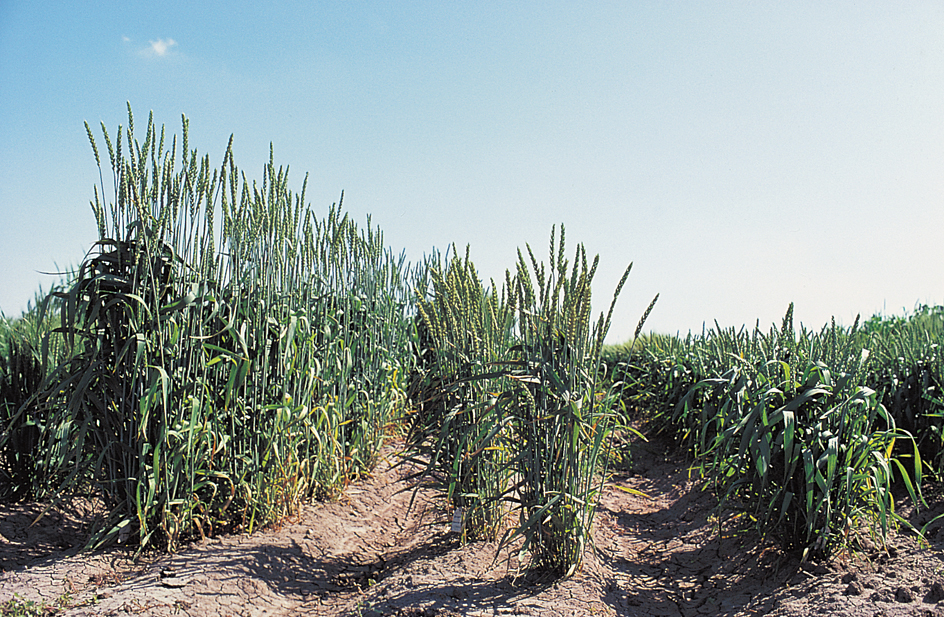
Alternative sources of energy.
The machines and vehicles used in industrialized farming require energy. Artificial fertilizers and other chemicals also require large amounts of energy to manufacture and distribute. Before the advent of biofuels, all of this energy came from diminishing supplies of fossil fuels. With biofuels, agriculture can create new sources of energy. But the process of deriving biofuel from crops often takes much energy itself. Biofuel crops can also replace food crops, reducing the availability of food.
Scientists hope to develop energy-efficient biofuels that do not crowd out the human food supply. Some biofuels can be produced from a by-product of food crops, such as the residue left over from turning sugar cane into sugar. Other biofuel crops, such as switchgrass, can thrive on land that is not suitable for food crops.
Adopting sustainable practices
is another way to deal with diminishing fossil fuels and other environmental and social concerns. But such practices have their drawbacks. They tend to require more labor, which can make their products more expensive. They also generally produce lower yields than typical industrialized farms. Moreover, some experts question whether sustainable farming methods can supply enough food for a growing population.
Research centers, along with a number of governments and nonprofit groups, fund research into sustainable agriculture. Shifting from intensive industrialized techniques to sustainable techniques around the world would require many social, economic, and technological changes. But as natural resources run out, continuing industrialized practices may become impractical for our civilization, just as hunting and gathering became impractical for our ancestors.
